Optimal Pool Care: Balancing Chemicals for Safe Swimming
June 13th, 2024
June 13th, 2024
A backyard pool can become the centerpiece of summer memories, where laughter echoes and the sun's warmth is matched only by the sparkling water below. Yet, maintaining that inviting oasis requires more than a simple splash. Precision in chemical balance is the key to keeping your pool both beautiful and safe.
Once, while helping a friend with his pool, I learned just how delicate this balance could be. A little too much chlorine and it felt like swimming in a bleach bath; too little and we risked inviting a whole ecosystem of unwelcome guests. Finding that perfect mixture requires more than just guesswork; it demands a careful consideration of chemistry.
Every pool has its unique set of requirements, influenced by factors such as size, location, and frequency of use. Understanding the interplay between chlorine, pH levels, alkalinity, and stabilizers ensures that your pool is not just a body of water, but a haven for relaxation and fun. This guide aims to de-mystify the process, providing you with clear, actionable steps so you can enjoy your pool without worry.
As you embark on this journey toward crystal-clear waters, remember that the right amount of each chemical not only preserves your pool’s integrity but also enhances your swimming experience. With a bit of knowledge and patience, you can master the art of pool maintenance, turning your backyard into an unrivaled retreat.
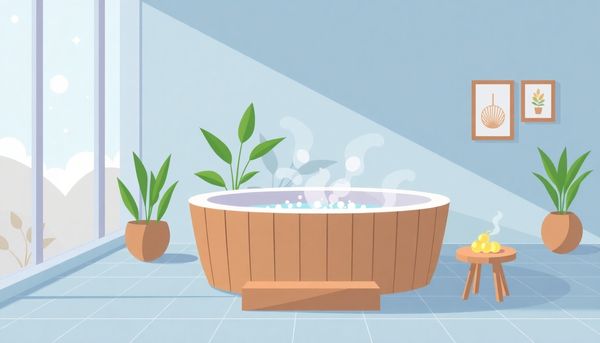
Maintaining the perfect chemistry of your pool is akin to crafting a fine recipe. Just as too much salt can ruin a dish, incorrect chemical balance can affect the clarity and safety of your water. Understanding the interplay between different elements—such as pH, alkalinity, and calcium hardness—ensures your pool remains inviting and safe for swimmers.
Start with pH balance, a crucial factor in pool chemistry. It should hover between 7.4 and 7.6 for optimal comfort and equipment longevity. If your pH drifts higher, you might need pH Decreaser. A 10,000-gallon pool typically requires around 12 ounces to correct slight imbalances. On the other hand, if the pH is low, consider adding soda ash or a similar increaser to restore balance. Remember, even minor adjustments can have significant impacts.
Next, focus on alkalinity, the unsung hero supporting your pH levels. With a target range of 80 to 120 PPM, maintaining alkalinity often involves adding substances like baking soda. For a 10,000-gallon pool, raising alkalinity by 10 PPM might need about 1.5 pounds of this household staple.
Finally, calcium hardness protects pool surfaces and equipment. Depending on your pool construction, levels should be between 200 and 275 PPM. Raising hardness by 50 PPM might demand about 5 pounds of increaser per 10,000 gallons.
Balancing these elements ensures not just clean water but a pool environment that’s welcoming and long-lasting. Keep these tips in mind, and your pool will remain the envy of every backyard BBQ.
Understanding the precise chemical dosages for your pool involves more than just grabbing any bottle off a shelf. Each pool has its own unique characteristics, dictated by its size and current water chemistry. It's not just a matter of dumping in a gallon of liquid chlorine or a scoop of pH increaser; the amounts must be tailored to your specific setup. For instance, to adjust the alkalinity of a 10,000-gallon pool by 10 PPM, you need around 1.5 pounds of an alkalinity increaser or its household equivalent, baking soda.
The next step is tackling the pH balance. Aiming for a sweet spot between 7.4 and 7.6, you’ll find that only half a pound of pH increaser is necessary to raise the pH by 0.2 in a 10,000-gallon pool. However, if your pH is significantly off, adding increments of one pound and retesting is suggested for accuracy. Similarly, managing pH that is too high involves using pH decreaser, at about 12 ounces per 10,000 gallons, with cautious adjustments using muriatic acid as a more potent alternative.
Chlorine levels should hover between 1-3 PPM, with 3 PPM being the goal for optimal sanitation. Regular maintenance doses help maintain this range, but remember that adding a chlorine stabilizer, like CYA, is essential if utilizing bleach or liquid chlorine. Lastly, calcium hardness—a crucial factor for protecting pool surfaces—needs attention, especially for concrete or plaster pools. Adding about 5 pounds of increaser for every 10,000 gallons can raise levels by 50 PPM. Balancing these chemicals not only ensures a sparkling pool but also prolongs the lifespan of your pool’s infrastructure.
Navigating the world of pool chemicals can feel like deciphering a secret code, especially when it comes to adjusting pH and alkalinity. Let's make sense of it all. Start by understanding the importance of these two elements: pH measures how acidic or basic your water is, ideally between 7.4 and 7.6. Alkalinity, on the other hand, acts as a buffer for pH changes, keeping this critical balance steady between 80 and 120 PPM.
To raise alkalinity, you'll need about 1.5 pounds of Alkalinity Increaser or baking soda per 10,000 gallons of water to bump it up by 10 PPM. So, if you're managing a 20,000-gallon pool, prepare to add 3 pounds. And remember, as alkalinity increases, pH might rise, too, a two-for-one deal in pool chemistry.
When it comes to adjusting pH, a different approach is required. If the pH dips below 7, aim to add roughly a pound of pH increaser per 10,000 gallons. This subtle tweak elevates your pH by about 0.2, preventing irritable skin and eye discomfort. Conversely, if your pH is soaring past 7.8, consider a pH decreaser. Typically, around 12 ounces will do the trick for a 10,000-gallon pool.
Balancing these chemicals may seem daunting, but with a bit of practice, it becomes second nature. Keeping your pool's chemistry in check not only ensures a pleasant swimming experience but also extends the life of your beloved oasis.
Under the summer sun, your pool’s chlorine can vanish faster than a popsicle on a scorching day. This is where stabilizers, also known as Cyanuric Acid (CYA), come into play. These invaluable additives act like a sunscreen for chlorine, shielding it from the sun’s UV rays and ensuring it works effectively to keep your pool safe and sparkling.
In the absence of stabilizers, your chlorine can dissipate in mere hours, especially under intense sunlight. Maintaining CYA levels between 30 and 50 PPM is crucial. For instance, introducing about 3 pounds of stabilizer to a 10,000-gallon pool can elevate your CYA to a comforting 30 PPM, providing a robust defense against chlorine loss. Yet, caution is key; overdoing it means draining and refilling your pool to balance those levels, quite a daunting task.
Picture a sunny afternoon where stabilizing agents have successfully done their job. Not only is your chlorine working more efficiently, but your pool is also a haven of cleanliness and safety. It's like having an invisible guardian over your water, making pool maintenance less of a chore and more of a breeze. So, before you splash into summer, remember this unsung hero of pool care—keeping your pool chemistry harmonized and your swimming experience enjoyable.
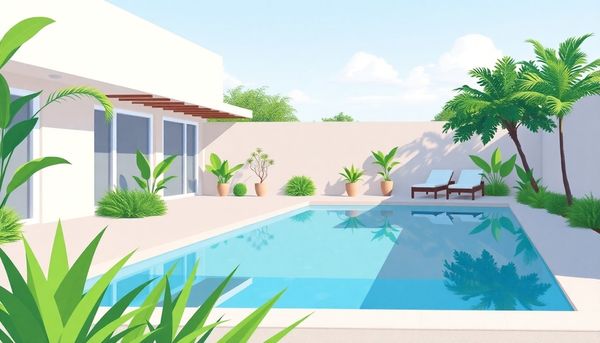
Adjusting the alkalinity levels in your pool is like setting the foundation for a balanced aquatic environment. Think of alkalinity as your water’s buffer, helping to stabilize pH levels and prevent dramatic fluctuations. When alkalinity is off, you may notice your pool water feeling a bit more harsh, or perhaps even see some unexpected changes in the pH readings despite your efforts.
For those with a 10,000-gallon pool, increasing alkalinity by 10 parts per million (PPM) typically requires around 1.5 pounds of an alkalinity increaser, such as baking soda. Suppose your pool holds 20,000 gallons; in this case, double the amount to 3 pounds. It’s a simple math game: calculate your pool’s capacity, identify how much you need to raise the alkalinity, and measure accordingly.
In my own backyard, I once struggled with persistent low alkalinity levels, which caused my pH to fluctuate wildly. By consistently using the right amount of baking soda, I discovered a steady balance that kept my water clearer and more comfortable for swimming. An important tip is to add the increaser gradually, allowing it to disperse evenly, and always recheck your levels after a day or so. Keep in mind, adjusting alkalinity can also nudge the pH upward, which might require a bit of fine-tuning afterward. Balancing alkalinity isn’t just a chore; it’s a step toward ensuring your pool is always ready for a splash.
Understanding the volume of your pool is the first step to mastering the art of pool chemistry. This knowledge is not just a number—it’s the key to balanced, sparkling water. When I first started managing my pool, I underestimated the importance of this calculation. I remember adding what I thought was a perfect amount of chlorine, only to find my pool looking like a cloudy mystery days later.
To accurately determine the volume of your pool, consider its shape and dimensions. For rectangular pools, multiply the length, width, and average depth to get the total cubic feet, then convert to gallons (multiply by 7.48). Circular pools require a slightly different approach: calculate the radius squared, multiply by pi (3.14), the depth, and then convert to gallons. More complex shapes need a bit more math, often breaking the pool into simpler shapes, calculating individually, and then adding them up.
Different types of pools also influence volume calculations. An above-ground pool might not have a consistent depth, while an in-ground pool could include a shallow and deep end. Once I realized I had been approximating my pool's volume, recalibrating made all the difference in chemical balance. With these calculations, you're better equipped to decide how much alkalinity increaser or pH decreaser you actually need. This understanding saves both time and money, ensuring your pool is always ready for a perfect swim.
Determining the right amount of alkalinity increaser for your pool can feel like a puzzle, but with a little guidance, it becomes a manageable task. Begin by understanding that the total alkalinity of your pool should ideally sit between 80 and 120 parts per million (PPM). This range helps stabilize pH levels, preventing sharp fluctuations that can damage your pool and irritate swimmers.
Let's say your 15,000-gallon pool currently reads 60 PPM, a bit below the recommended minimum. To boost it to a more comfortable 100 PPM, you’ll need to add approximately 6 pounds of alkalinity increaser or baking soda. The rule of thumb is that for every 10,000 gallons, 1.5 pounds will raise the alkalinity by 10 PPM. Given your pool's size, a little simple math dictates the solution.
One weekend, I tackled my pool's low alkalinity. Measuring carefully, I gradually added the baking soda, letting the pump mix it evenly. As I watched the water clear up over the next few days, it was rewarding to see the results of my efforts. It’s important to note that raising alkalinity can also nudge your pH upward, so keep an eye on those levels too. Remember, patience is crucial; add the chemical gradually and retest to avoid overcorrection. In no time, you’ll have a stable, inviting pool ready for swimming.
Balancing the pH and alkalinity in your pool can often feel like a delicate dance. These two elements are closely intertwined, and tweaking one can inadvertently affect the other. Imagine trying to raise the pH slightly, only to find that your alkalinity has surged unexpectedly. This is because alkalinity acts as a buffer for pH, helping to prevent rapid fluctuations. To adjust both simultaneously, one must understand the relationship and the impact of different chemicals.
When working on a 10,000-gallon pool, if the alkalinity needs a boost of 10 PPM, about 1.5 pounds of an alkalinity increaser or baking soda would be required. This addition might naturally elevate the pH as well, typically a welcome effect if the pH is on the lower side. However, if the pH remains stubbornly low, a pH increaser—like soda ash—can be used. For a slight pH increase of 0.2, you'd add around half a pound.
Balancing these two parameters can sometimes feel like a game of chemistry chess. Ensuring your pH sits comfortably between 7.4 and 7.6 while keeping alkalinity between 80 and 120 PPM helps maintain a harmonious environment for swimmers. Frequent testing and incremental adjustments are key. Perhaps even consider keeping a logbook of your pool's chemistry changes to track patterns and simplify future maintenance.

When it comes to maintaining the ideal pH balance in a swimming pool, it’s like crafting the perfect recipe. Too high or too low, and you might end up with irritated eyes or corroded equipment. The sweet spot lies between 7.4 and 7.6, where swimmers find comfort and components last longer. For a typical 10,000-gallon pool, introducing half a pound of pH Increaser or Soda Ash can boost your pH by 0.2. Precision is key here; even a small misstep can lead to a slippery slope of chemical imbalance.
For those with larger aquatic havens, doubling the pool size naturally requires proportionate adjustments. A 20,000-gallon pool demands about a pound of pH increaser. Meanwhile, your smaller backyard retreats, say around 5,000-gallons, need just 4 ounces. If your pH reads below 7, it’s wise to tackle this incrementally, adding a pound at a time, and retesting. This careful approach ensures you don’t overshoot your target.
While adjusting pH, it’s essential to remember that total alkalinity might rise as a result, but the primary focus remains on achieving that perfect pH balance. This nuanced dance of chemicals not only makes swimming more enjoyable but also shields the pool’s structure and systems from wear. For pool owners, achieving and maintaining this balance is a testament to their dedication to both aesthetics and functionality.
Navigating the world of pool chemicals can feel like learning a new language. Yet, with a little guidance, you can transform your pool into a sparkling oasis. First and foremost, understanding your pool's volume is crucial, as all dosages hinge on this figure. Let’s break down the essentials, starting with alkalinity. To raise alkalinity by 10 PPM in a 10,000-gallon pool, you'll need about 1.5 pounds of Alkalinity Increaser or Baking Soda. If your alkalinity needs a significant boost, say by 40 PPM, simply multiply the required dose—resulting in roughly 6 pounds for the same pool size.
Next, consider your pool's pH, ideally resting between 7.4 and 7.6. Raising your pH by 0.2 in a 10,000-gallon pool requires about half a pound of pH Increaser or Soda Ash. Noticeably low pH levels demand a more robust approach: one pound per 10,000 gallons, followed by retesting.
Sometimes, the chemistry battle involves lowering your pH and alkalinity. A pH Decreaser, about 12 ounces for every 10,000 gallons, can do the trick. For larger pools, adjust accordingly—1.5 pounds for a 20,000-gallon pool, for instance.
Chlorine levels, meanwhile, need weekly maintenance. Aim for free chlorine levels between 1 and 3 PPM, with a preference for the higher end to ensure effective sanitation. Finally, protect your chlorine investment with Cyanuric Acid (CYA), especially if using bleach or liquid chlorine. To elevate CYA levels to 30 PPM, incorporate about 3 pounds per 10,000 gallons, and proceed cautiously to avoid overcorrecting, which might necessitate a partial drain.
With these foundational calculations, you’re well on your way to mastering pool care without the guesswork.
Balancing your pool's alkalinity and pH levels is akin to tuning a musical instrument; it requires precision and a bit of know-how. Alkalinity acts as a buffer for pH, preventing sudden swings, while pH determines the water's acidity. Both need to dance in harmony to keep your pool inviting and safe. Imagine hosting a barbecue by your poolside and your guests jumping into water that's too acidic—what a disaster!
Begin by measuring your pool's current alkalinity. For those with a 10,000-gallon pool, raising alkalinity by 10 PPM generally requires 1.5 pounds of Alkalinity Increaser or baking soda. This number will double for a 20,000-gallon pool. Keep in mind that a well-balanced alkalinity falls between 80 and 120 PPM, ideally around 100 PPM. Adjustments here often result in a slight increase in your pH level as well.
Next, focus on the pH, which should hover between 7.4 and 7.6. If tweaking is required, a 10,000-gallon pool might need around half a pound of pH Increaser to shift the level by 0.2. Larger pools, naturally, will require more. However, if your pH tips below 7, consider starting with a pound per 10,000 gallons and recheck.
Remember, small gradual changes are best, allowing the chemicals to disperse evenly. This ensures your backyard oasis remains as inviting as ever, without the risk of chemical imbalance.
Selecting the right chemicals for your pool is like choosing the perfect ingredients for a recipe; the balance is essential for a delightful outcome. Each chemical plays a specific role in maintaining crystal-clear, safe water. The pH level, for instance, is akin to seasoning; too much or too little can spoil the experience. A pool with a pH between 7.4 and 7.6 ensures swimmers have a refreshing dip without irritation. To adjust this, many turn to pH Increasers or Soda Ash, often needing just 8 ounces for a 10,000-gallon pool to get it right.
Alkalinity acts as a buffer for your pH levels, preventing sudden changes that could ruin the delicate balance. Baking soda, a common household item, serves as an effective alkalinity increaser. In my experience, it's remarkable how just a couple of pounds can stabilize a large pool, keeping the water not only inviting but also gentle on skin.
Chlorine, the guardian against unwanted bacteria, requires a keen eye for precision. Maintaining free chlorine levels between 1 and 3 PPM is crucial. Liquid chlorine or granules can be used, but don’t forget the stabilizer, especially if you’re in a sun-drenched location. CYA (Cyanuric Acid) will help shield chlorine from UV rays, ensuring its protective powers last longer.
Finally, calcium hardness protects the pool's structure. While it may sound technical, simply adding the right amount preserves your pool’s beauty and longevity. Remember, each chemical addition should be methodical, like following a cherished family recipe, ensuring your pool remains a backyard paradise.
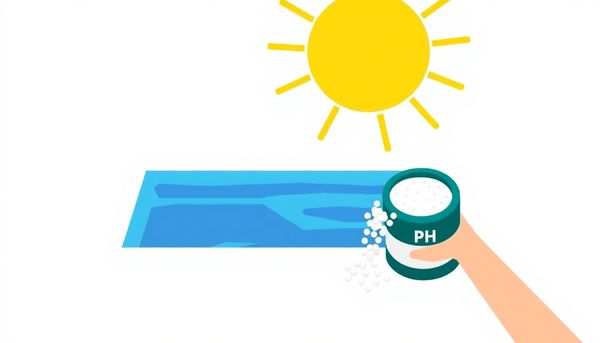
Did you ever think about the delicate dance of chemistry happening right under the surface of your pool? Managing the pH levels in your pool is akin to being a conductor of an orchestra, where precision keeps the melody sweet and harmonious. The ideal pH range, a sweet spot between 7.4 and 7.6, ensures your pool is neither too harsh on the skin nor a breeding ground for bacteria. But how do you achieve this balance?
When your pH begins to creep upwards, often due to heavy rainfall or alkaline fill water, it’s time to step in with the right amount of pH Decreaser. For a 10,000-gallon pool, roughly 12 ounces will gently nudge your pH down from a high of 8.0 to a more comfortable level. It’s a bit like adjusting the seasoning in a favorite recipe—too much can ruin the dish, too little leaves it bland.
Once I had to babysit my neighbor’s pool while they were away. Their pH had soared to 8.2, leaving their pool less inviting than a swamp. A careful application of 18 ounces of Muriatic Acid, spread over two days with diligent testing, transformed their water back to a clear, sparkling oasis. Remember, every pool is unique, and the secret lies in small, calculated adjustments, retesting, and understanding the chemistry of your own backyard paradise.
Calculating the volume of your pool might seem as straightforward as filling a bathtub, but with different shapes and sizes, it can feel like solving a riddle. A friend of mine once spent a sunny afternoon guessing his pool's capacity, adding chemicals with a hopeful heart but ending with a cloudy, uninviting mess. To avoid similar frustration, understanding your pool's actual volume is crucial for perfect chemical balance.
Start by identifying the shape of your pool. Rectangular pools are the simplest to measure: multiply length by width, then by the average depth, and finally convert cubic feet to gallons (one cubic foot equals approximately 7.48 gallons). For circular or oval pools, use the formula for the area of a circle (πr²) or an ellipse (πab) and multiply by the average depth, then convert to gallons.
Don't forget about irregular shapes—measure them in sections, like a jigsaw puzzle, and add up each part for total volume. Pools with variable depths can be tricky; the key is calculating the average depth by adding the shallow and deep ends together, then dividing by two.
Remember, precision is your friend here. Many pool owners overlook the importance of accuracy, leading to chemical imbalances that could affect swimmers' comfort and your pool’s health. Once you have your pool's volume nailed down, you can confidently mix your chemicals, knowing exactly how much to add for a crystal-clear oasis.
Handling pool chemicals requires care, especially when it comes to balancing pH levels. You might remember the time you added too much pH Decreaser and ended up with a pool that felt more like a chemistry experiment. To avoid such mishaps, a precise approach is crucial. For a typical 10,000-gallon pool, you’ll need about 12 ounces—or ¾ of a pound—of pH Decreaser to gently nudge your pH back into the ideal range of 7.4 to 7.6 if it's hovering between 7.8 and 8.0. Double-check the current pH level before proceeding, as accurate dosing prevents the see-saw effect of overshooting your mark.
Consider your pool's surface as well. When you pour the pH Decreaser, aim for an area with good water circulation to promote even distribution. I once made the mistake of dumping chemicals too close to a metal fixture and ended up with a slight discoloration—learning from others' experiences can save you from similar blunders.
Be mindful of safety gear. Gloves and goggles might seem over-the-top, but they safeguard against accidental splashes, which can be more common than you might think. It's also wise to keep the pool area clear of swimmers for about half an hour post-application, giving the chemicals time to settle and integrate fully. Balancing safety and accuracy ensures a summer of worry-free swimming and sparkling water.
There's a certain charm in solving pool chemical puzzles with everyday household items. Imagine reaching into your pantry instead of your pool shed. Baking soda, for instance, is a well-known hero here. To raise your pool’s alkalinity, this kitchen staple can work wonders. For a 10,000-gallon pool, sprinkling in about 1.5 pounds of baking soda can bump up alkalinity by 10 PPM. It's almost magical how this simple powder from your baking cupboard can maintain pool harmony.
Vinegar, too, isn't just for salads. When pH levels soar beyond desired comfort, vinegar can step in as a milder substitute for harsh commercial pH decreasers. Though not as potent as specialized chemicals, a careful addition can subtly nudge down the pH levels, making your pool water more hospitable. Just remember, it's a slow process, so patience is key.
Borax, usually reserved for laundry, doubles as a pH increaser. A few cups can aid in fine-tuning your pool’s chemistry, raising the pH while being gentle on skin and eyes.
These household substitutes require a bit of experimentation and finesse. Always retest your pool water frequently when using them to achieve that perfect balance. Embracing this method not only saves money but also brings a sense of satisfaction, knowing you've mastered yet another facet of pool maintenance with everyday items.
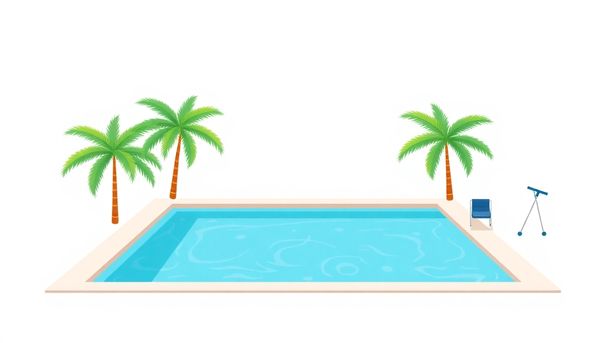
Keeping pool water pristine is an art and a science. It begins with understanding the delicate balance of chemicals that need to work harmoniously. Whether it's a serene morning swim or a lively afternoon splash, maintaining clear, safe water ensures everyone's enjoyment. The secret lies in precise chemical additions, starting with knowing your pool's volume. This information is your compass, guiding you through the labyrinth of pool maintenance.
Alkalinity, for instance, is the backbone of water stability. To elevate your pool's alkalinity by 10 PPM, add around 1.5 pounds of alkalinity increaser per 10,000 gallons. The effects are gradual but noticeable, setting a stable foundation for pH levels to thrive. Remember, if you have a larger pool, proportionally scale your doses to match. Maintaining this balance not only protects swimmers but also prolongs the lifespan of your pool's structure.
Chlorine is the unsung hero, tirelessly sanitizing your pool. With free chlorine levels ideally between 1 and 3 PPM, a weekly maintenance dose keeps bacteria at bay. If sunlight is your foe, Cyanuric Acid (CYA), or stabilizer, becomes crucial. It shields chlorine from the sun's UV rays, preserving its efficiency. However, use caution—excessive CYA demands a partial drain and refill to remedy.
By mastering these elements, you transform your pool into a crystal-clear oasis, where every swim is a refreshing escape. It's not just about adding chemicals; it's about crafting an experience of peace and safety in your own backyard.
Mastering the art of pool maintenance can feel like a delicate balancing act, especially when determining the precise chemical dosages required. Start with understanding the capacity of your pool; this is your foundational step. For most backyard pools, knowing you have 10,000 gallons of water can significantly simplify calculations. With this knowledge, the task becomes much more manageable.
Take alkalinity, for instance. When levels dip below the ideal 80-120 PPM, you can remedy this with 1.5 pounds of alkalinity increaser per 10,000 gallons to elevate levels by 10 PPM. It's straightforward math: a 20,000-gallon pool would require double. Personal experience has taught me that patience is key here—test, add, and retest until you hit that sweet spot.
For pH adjustments, the approach changes slightly. If you need to nudge your pH upwards, half a pound of pH increaser for every 10,000 gallons should adjust the pH by about 0.2. Conversely, if you're battling high pH, a similar measurement of pH decreaser becomes your ally. My neighbor once rushed this process and ended up with murky water; precision truly matters.
Chlorine levels demand their own attention. Maintaining a free chlorine level of 1-3 PPM ensures your water stays sanitized. Weekly maintenance doses based on current levels are vital. Remember, every pool has its own personality. Regular checks and adjustments will transform your pool from merely swim-ready to a pristine oasis.
In the quest for sparkling pool water, household alternatives can be your secret allies, offering both convenience and cost savings. I recall my own surprise when I first discovered that baking soda, a staple in my pantry, could double as an alkalinity increaser. For instance, to boost alkalinity by 10 PPM in a 10,000-gallon pool, you’d need about 1.5 pounds of baking soda, a much friendlier option for many than traditional pool chemicals.
Baking soda isn't the only household hero in this tale. Vinegar, another everyday item, can help lower pH levels discreetly. While it’s essential to approach with caution—especially in terms of measuring the right amount—vinegar can serve as an eco-friendly alternative to more caustic substances like muriatic acid. A small trial run on a section of your pool allows you to gauge its effect and adjust appropriately.
Then, there’s the trusty bleach, which serves as an effective chlorine substitute. Remember, though, that bleach lacks stabilizers found in pool-specific chlorine products, so adjustments may be necessary to protect your chlorine from the sun’s rays. Ultimately, the key to safely integrating these household products lies in understanding their chemical properties and effects, ensuring you maintain that perfect aquatic balance without compromising the safety and enjoyment of your pool.
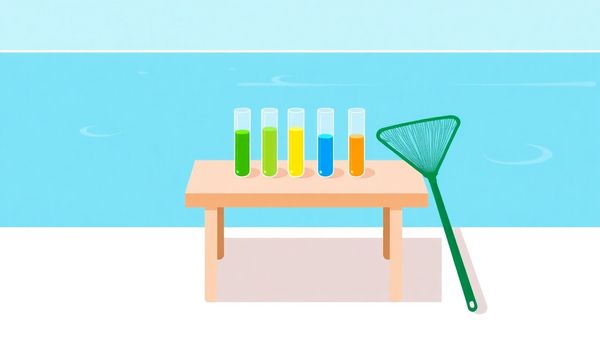
This article provided insights into maintaining your pool. Start your pool care journey today!
Want to become a pool maintenance expert? Our free Pool School course covers everything you need to know about pool care. From basic maintenance to advanced troubleshooting, you'll learn how to:
Join over 10,000 pool owners who have already transformed their pool care routine. Get started with our free Pool School course today!